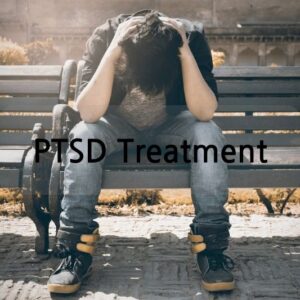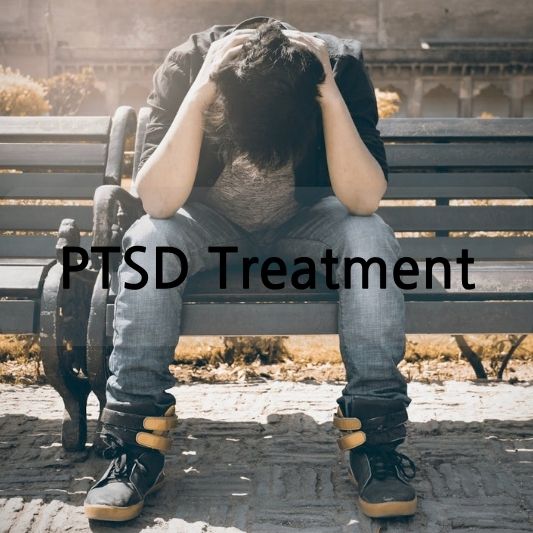Post-Traumatic Stress Disorder (PTSD) is a mental health condition that can develop after experiencing or witnessing a traumatic event. It can affect anyone, regardless of age, gender, or background, and its symptoms can be debilitating if left untreated. Understanding the available PTSD treatment options is crucial for individuals seeking relief and healing from their symptoms.

Understanding PTSD Symptoms
PTSD symptoms can vary from person to person but often include intrusive memories, flashbacks, nightmares, hypervigilance, avoidance behaviors, and mood disturbances. These symptoms can significantly impact daily functioning and quality of life, making it challenging for individuals to cope with everyday stressors.
Importance of Seeking Treatment
Seeking treatment for PTSD is not a sign of weakness but a courageous step toward recovery. Treatment can help individuals manage their symptoms, improve their coping skills, and regain a sense of control over their lives. Without treatment, PTSD symptoms may worsen over time and lead to complications such as depression, substance abuse, and relationship problems.
Different Types of PTSD Treatment
PTSD treatment approaches may involve therapy, medications, lifestyle changes, and alternative therapies. Each treatment modality aims to address specific symptoms and promote overall well-being.
Cognitive Behavioral Therapy (CBT) for PTSD
CBT is one of the most effective therapies for PTSD. It focuses on identifying and challenging negative thought patterns and behaviors associated with trauma. Through CBT, individuals learn new coping skills and strategies to manage their symptoms and improve their quality of life.
Eye Movement Desensitization and Reprocessing (EMDR) Therapy
EMDR therapy involves recalling distressing memories while focusing on external stimuli, such as eye movements or taps. This helps individuals process traumatic memories and reduce their emotional intensity, allowing them to move forward with their lives.
Medications for PTSD
Medications, such as SSRIs and SNRIs, can help alleviate symptoms of PTSD, including depression and anxiety. Other medications, such as prazosin for nightmares or benzodiazepines for short-term anxiety relief, may also be prescribed based on individual needs and preferences.
Alternative Therapies for PTSD
In addition to traditional treatments, alternative therapies like yoga, meditation, acupuncture, and art therapy can complement PTSD treatment by promoting relaxation, stress reduction, and emotional healing.
Lifestyle Changes and Self-Care Tips
Engaging in regular exercise, maintaining a balanced diet, practicing relaxation techniques, and getting an adequate amount of sleep are essential for managing PTSD symptoms and improving overall well-being.
Support Groups and Peer Counseling
Joining support groups and participating in peer counseling sessions can provide individuals with valuable emotional support, validation, and understanding from others who have experienced similar traumas.
Challenges in PTSD Treatment
PTSD treatment may come with challenges, including stigma, access to care, and finding the right treatment approach. Overcoming these challenges requires patience, perseverance, and a supportive network of friends, family, and healthcare professionals.
Overcoming Stigma Surrounding PTSD Treatment
Addressing stigma associated with PTSD treatment is crucial for encouraging individuals to seek help without fear of judgment or discrimination. Education, advocacy, and raising awareness about PTSD can help reduce stigma and promote understanding and acceptance.
Importance of Patience and Persistence
Recovery from PTSD is a journey that takes time and dedication. It’s essential for individuals to be patient with themselves and their treatment progress while staying committed to the healing process. With the right support and resources, individuals can overcome PTSD and lead fulfilling lives.
Conclusion
PTSD treatment offers hope and healing to those struggling with the aftermath of trauma. By seeking help, exploring various treatment options, and staying resilient, individuals can reclaim control over their lives and move toward a brighter future.
FAQs on PTSD Treatment
How long does PTSD treatment typically last?
The duration of PTSD treatment varies depending on individual needs and the severity of symptoms. Some individuals may see improvement within a few months, while others may require longer-term therapy.
Are there any side effects associated with PTSD medications?
Like any medication, PTSD medications may cause side effects. It’s essential to discuss potential side effects with a healthcare provider and monitor for any adverse reactions while taking medication.
Can PTSD be cured completely with treatment?
While PTSD symptoms can improve with treatment, there is no guaranteed cure. However, many individuals experience significant relief from symptoms and can lead fulfilling lives with ongoing support and management.
Is it common for PTSD symptoms to resurface after treatment?
PTSD symptoms may resurface during times of stress or triggering events, even after successful treatment. Learning coping skills and having a support system in place can help individuals manage symptoms effectively.
Are there any support resources available for family members of individuals with PTSD?
several support groups and resources are available for family members and loved ones of individuals with PTSD. These resources provide education, guidance, and emotional support for those impacted by PTSD.
